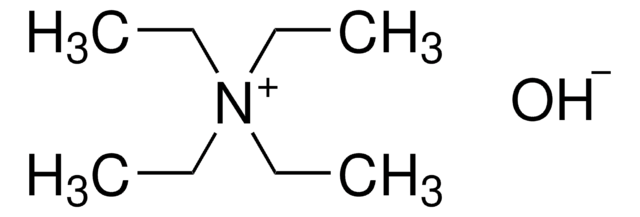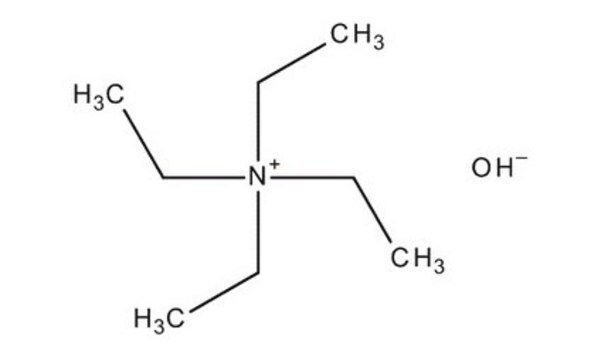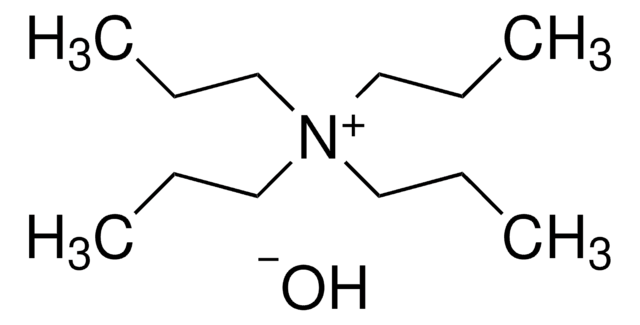177806
Tetraethylammonium hydroxide solution
20 wt. % in H2O
Synonym(s):
TEA hydroxide
About This Item
Recommended Products
form
liquid
Quality Level
concentration
20 wt. % in H2O
refractive index
n20/D 1.373
density
1.01 g/mL at 25 °C
SMILES string
[OH-].CC[N+](CC)(CC)CC
InChI
1S/C8H20N.H2O/c1-5-9(6-2,7-3)8-4;/h5-8H2,1-4H3;1H2/q+1;/p-1
InChI key
LRGJRHZIDJQFCL-UHFFFAOYSA-M
Looking for similar products? Visit Product Comparison Guide
General description
Application
- Chromatographic applications: It plays a role in the preparation of ferrofluid from adipic acid-coated magnetic nanoparticles and hydrophobic deep eutectic solvent used in dispersive micro-solid-phase extraction, enhancing the pre-concentration and determination of clozapine in biological samples (Nia and Hadjmohammadi, 2023).
- Material and interfacial science: Utilized in the remote control of polyelectrolyte-surfactant mixtures, tetraethylammonium hydroxide solution aids in creating responsive materials and interfacial properties for innovative material science applications (Schnurbus et al., 2022).
Signal Word
Danger
Hazard Statements
Precautionary Statements
Hazard Classifications
Eye Dam. 1 - Skin Corr. 1B
Storage Class Code
8A - Combustible corrosive hazardous materials
WGK
WGK 3
Flash Point(F)
Not applicable
Flash Point(C)
Not applicable
Personal Protective Equipment
Certificates of Analysis (COA)
Search for Certificates of Analysis (COA) by entering the products Lot/Batch Number. Lot and Batch Numbers can be found on a product’s label following the words ‘Lot’ or ‘Batch’.
Already Own This Product?
Find documentation for the products that you have recently purchased in the Document Library.
Our team of scientists has experience in all areas of research including Life Science, Material Science, Chemical Synthesis, Chromatography, Analytical and many others.
Contact Technical Service






